How Hybrid Care Encourages Seniors to Stick With Long-Term Goals
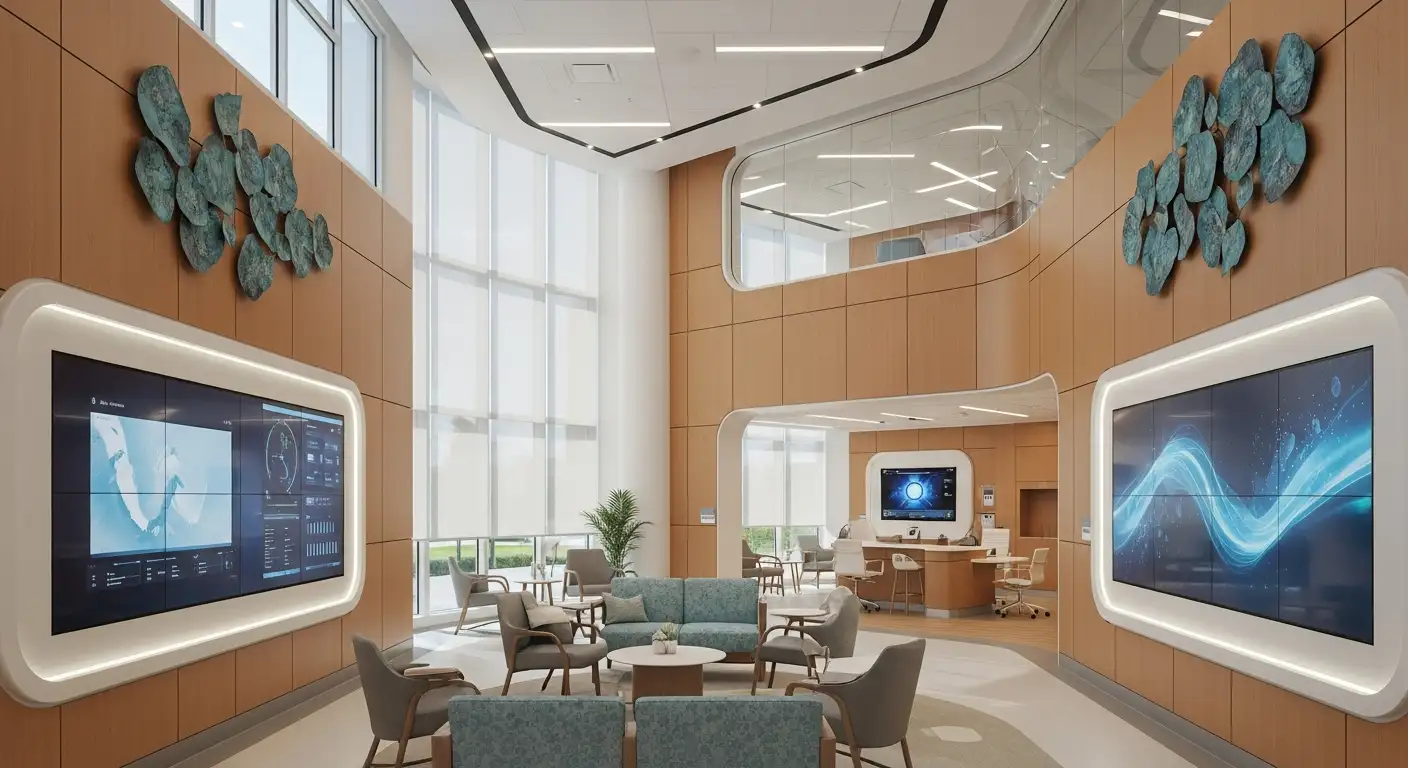
Understanding the Promise of Hybrid Care for Older Adults
As the population ages, maintaining long-term health and wellness becomes increasingly critical. Hybrid care models that combine technology, personalized interventions, and holistic support offer an innovative solution to help seniors stick with their health goals. This article explores how hybrid care approaches integrate physical, mental, and social dimensions of wellness, employing cutting-edge tools and strategies to promote sustainable outcomes in senior populations.
The HOPE-FIT Model: A Hybrid Framework for Senior Wellness
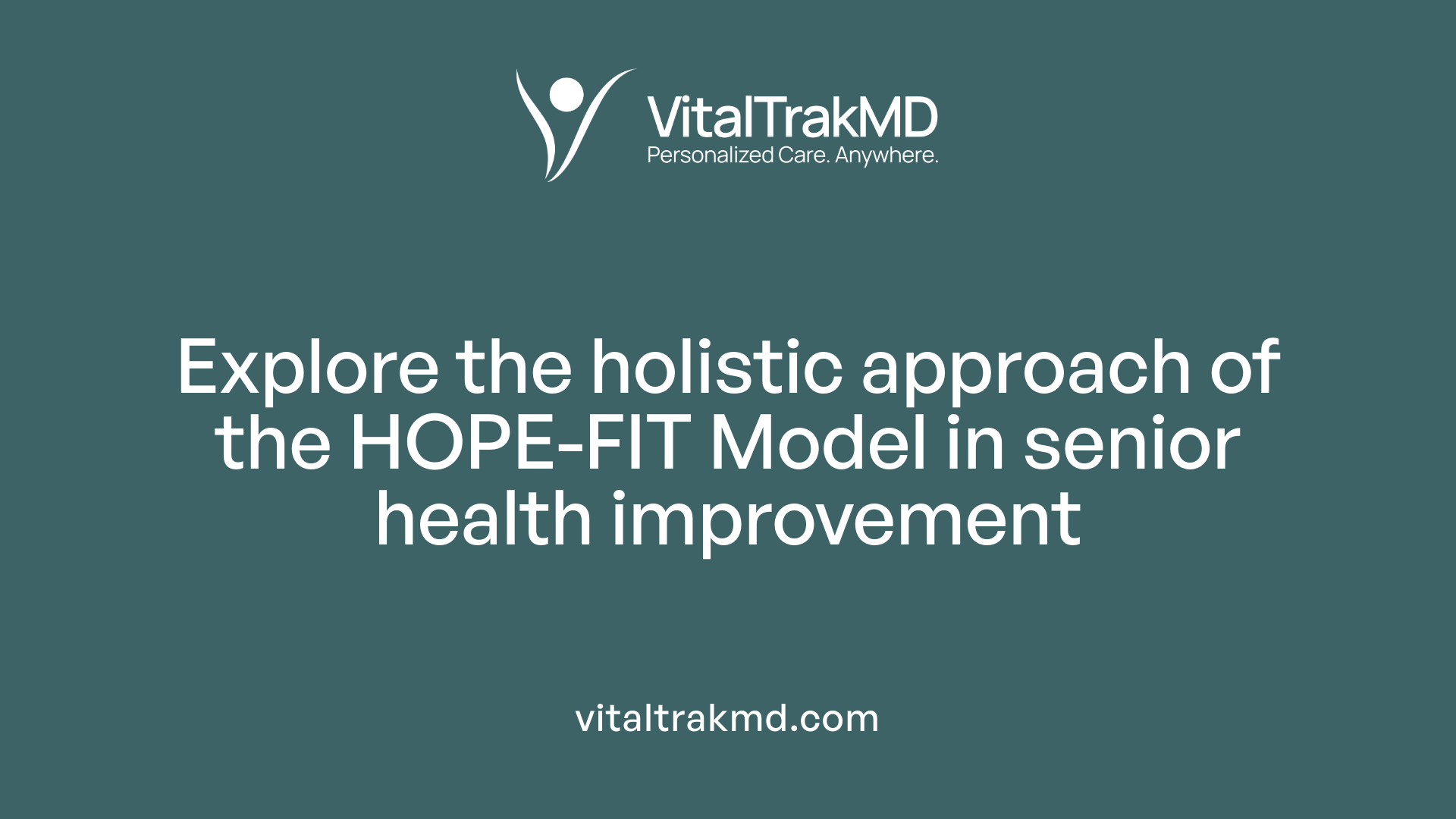
How do wellness programs integrate care approaches to support overall health?
The HOPE-FIT model exemplifies integrated care by combining physical exercise, psychosocial support, and digital health tools in a way that addresses the multifaceted needs of older adults. This hybrid, scalable program promotes both physical and psychological well-being, recognizing the importance of comprehensive care.
Central to HOPE-FIT’s approach is the integration of home-based exercise routines with psychosocial support mechanisms. This dual focus helps participants improve physical activity levels while also fostering social connectedness and mental health. The model actively counteracts barriers such as social isolation, common in older populations, by encouraging caregiver involvement and community engagement.
Additionally, HOPE-FIT addresses digital exclusion by incorporating user-friendly digital health technologies—like wearables and smart-home sensors—paired with home outreach visits. This ensures older adults who might be unfamiliar with technology still benefit from real-time health monitoring and personalized feedback.
By combining these elements, HOPE-FIT supports older adults holistically, targeting both the body and mind through an accessible, multifaceted program tailored to their unique challenges.
Leveraging Smart-Home Health Technologies for Real-Time Support

How do wellness programs integrate care approaches to support overall health?
Wellness programs for older adults are increasingly incorporating advanced smart-home health technologies to deliver comprehensive care. Wearables and sensors collect continuous data on physical activity, sleep, and vital signs, offering a detailed picture of an individual's health status. EEG devices add another layer by monitoring brain activity, which helps assess cognitive and emotional well-being in real-time.
These technologies provide personalized health feedback that empowers participants to understand and manage their wellness actively. Immediate insights enable timely interventions, support adherence to health goals, and allow caregivers to adjust plans based on real-time needs.
Addressing barriers such as digital literacy is essential to maximize the benefits of smart-home monitoring. Programs often include gradual onboarding processes, caregiver involvement, and community support to ease seniors into using digital tools confidently. This helps overcome digital exclusion and enhances social connectedness.
Overall, integrating wearables, sensors, EEG devices, and tailored feedback into senior wellness programs creates a hybrid care model. This fusion supports physical, psychological, and social health in a personalized, scalable way, improving outcomes and quality of life for older adults.
Promoting Long-Term Adherence Through Gradual Onboarding and Community Engagement
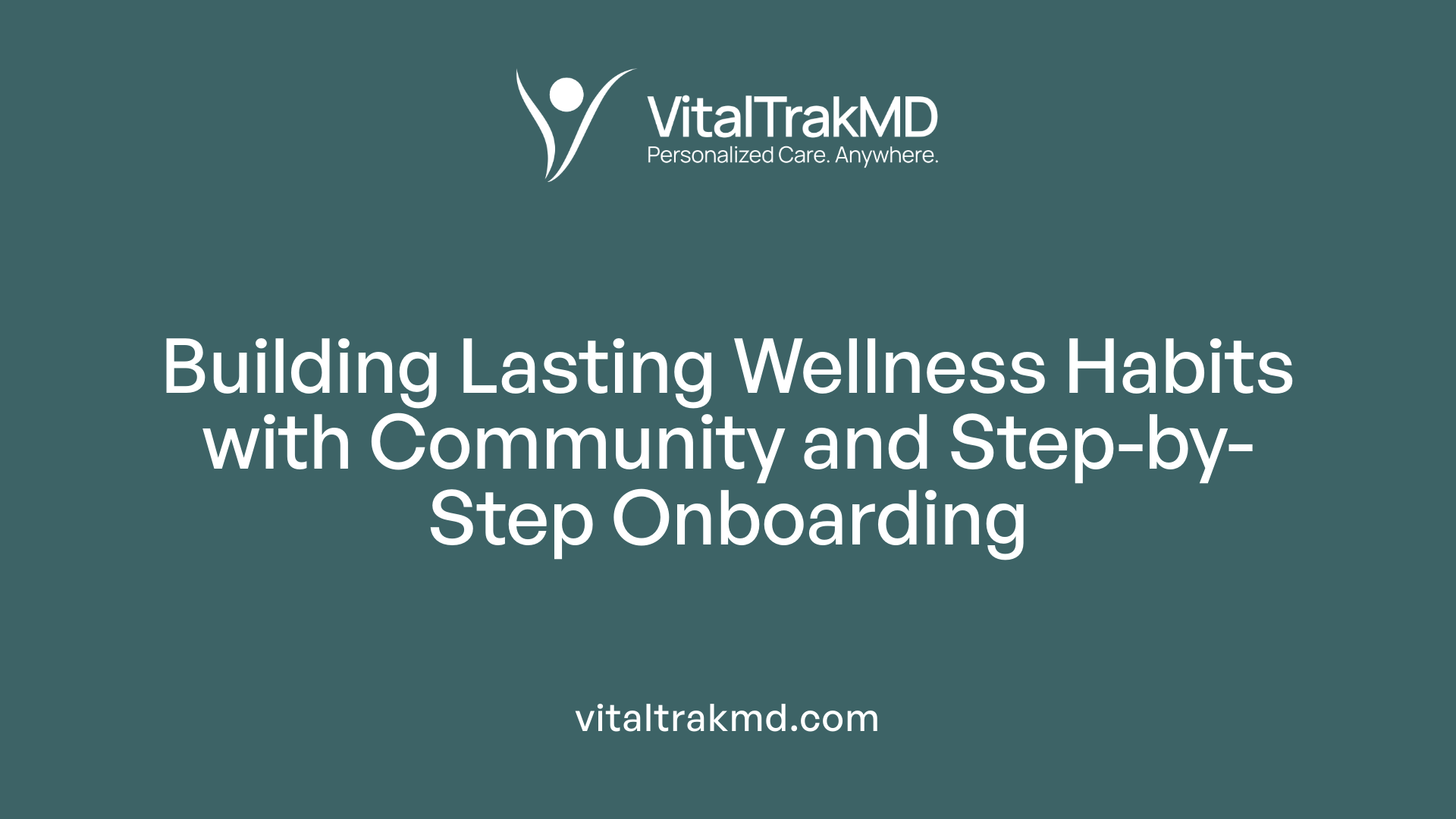
How do wellness programs integrate care approaches to support overall health?
The HOPE-FIT program promotes sustained engagement through a blend of behavioral incentives, caregiver involvement, and community support. Gradual onboarding allows older adults to ease into new routines without feeling overwhelmed, boosting their confidence and commitment.
Caregivers play a crucial role as co-users in the program, reinforcing daily habits and providing emotional encouragement, which helps mitigate social isolation often experienced by seniors. By involving caregivers, HOPE-FIT creates a shared responsibility model that enhances accountability and personalized care.
Community support offers an additional layer of motivation. Group activities and outreach initiatives connect participants with peers, fostering a sense of belonging and shared purpose. These social interactions not only enhance psychological well-being but also increase adherence to physical activity and health goals.
Together, these approaches form an integrated support system tailored to older adults’ needs, effectively sustaining motivation and encouraging long-term participation in wellness activities.
Evaluating Wellness Impact Using the RE-AIM Framework
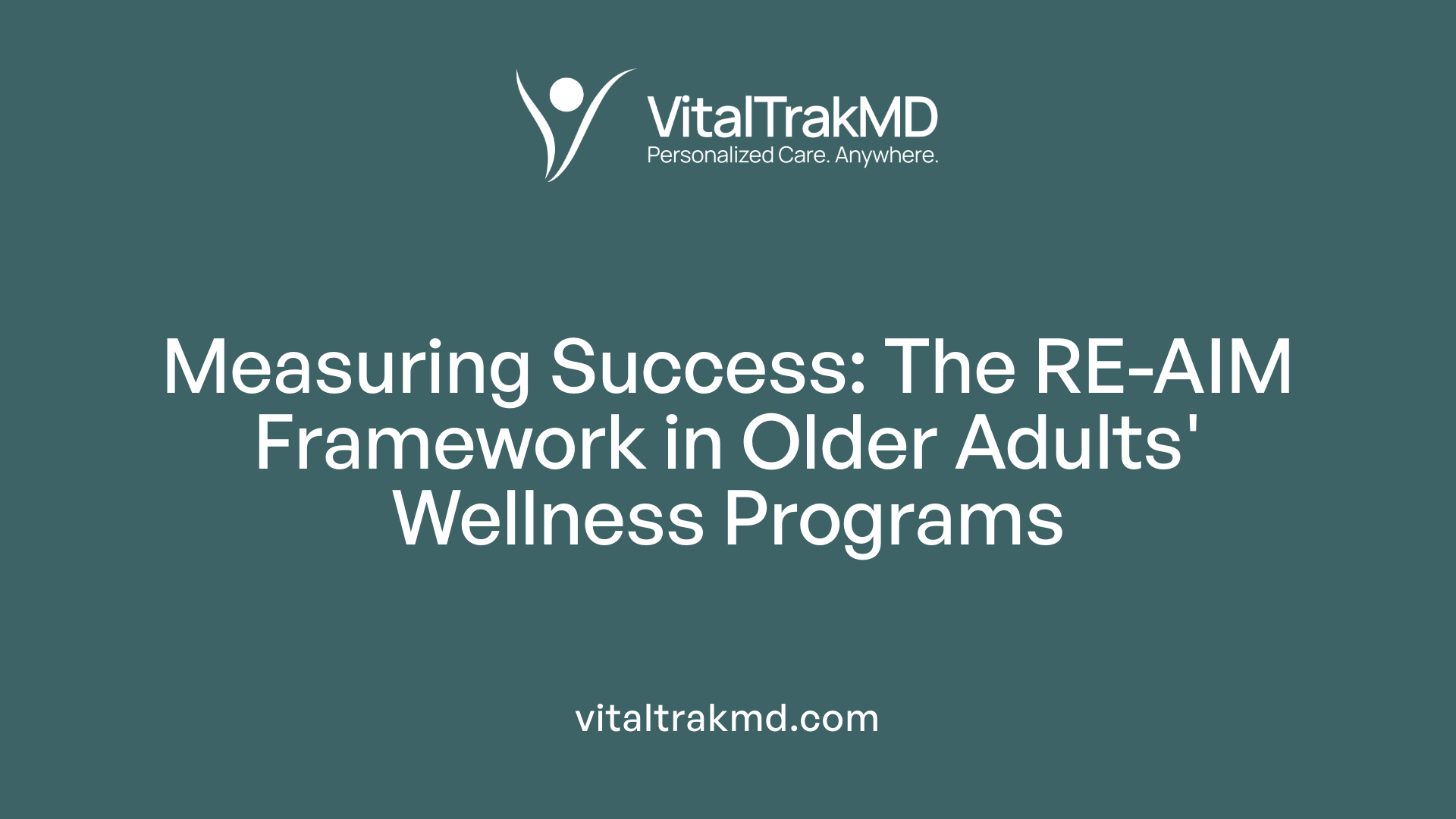
Multidimensional Evaluation through RE-AIM
The HOPE-FIT model employs a comprehensive evaluation strategy using the RE-AIM framework. This approach assesses Reach, Effectiveness, Adoption, Implementation, and Maintenance to understand the program's impact across multiple dimensions.
Tracking Physical Activity Levels
Physical activity is a central outcome for HOPE-FIT, with the program integrating exercise components supported by digital health technologies. Evaluations focus on improvements in activity levels, monitored through wearable devices, which help personalize and enhance engagement.
Enhancing Quality of Life
Beyond physical health, the program measures changes in quality of life, encompassing mental well-being and psychosocial health. HOPE-FIT’s inclusion of psychosocial support aims to address these factors, tracking participants' overall life satisfaction and emotional health.
Boosting Digital Literacy
To overcome barriers like digital exclusion, HOPE-FIT emphasizes digital literacy improvements. The evaluation monitors participants' ability to effectively use the program’s technology tools, such as health-monitoring wearables and sensors, ensuring accessibility and empowerment.
Fostering Social Connectedness
Social isolation is a recognized challenge among older adults. The program actively promotes social connectedness through community engagement and caregiver co-use. Evaluations measure participants' social interactions and support networks, key for holistic wellbeing.
Through this multidimensional evaluation, HOPE-FIT gains valuable insights into its effectiveness and areas for refinement, supporting its goal of sustained health improvements in older adults.
Short-Term Lifestyle Interventions: Effective Kickstarts to Lasting Change

What are the most effective weight loss strategies within wellness programs?
Short-term lifestyle interventions lasting six months or less have proven to be effective strategies for initiating weight loss among adults with overweight or obesity. These programs typically result in an average weight loss ranging from 2.4 to 2.7 kilograms, demonstrating meaningful health benefits even within a limited timeframe.
6-month or less weight loss programs
Programs lasting less than 13 weeks have shown an average weight loss of about 2.7 kg, while those lasting between 13 and 26 weeks typically see around 2.4 kg lost. This evidence suggests that brief interventions can yield significant results comparable to longer programs, especially with better participant retention and engagement.
Multicomponent interventions involving nutrition and physical activity
Most successful short-term interventions combine both nutritional guidance and physical activity. This multicomponent approach promotes self-monitoring and supports behavioral changes that enhance adherence and lead to improved weight loss outcomes.
Short-term vs long-term program effectiveness
Short-term programs may be just as effective as longer ones due to higher retention rates and participant motivation. Additionally, modest weight loss of approximately 2 kilograms is linked to reductions in risks for conditions such as type 2 diabetes. These factors make short-term interventions an accessible and practical choice for many individuals who may not commit to extended programs.
In summary, combining nutrition and exercise in short-term interventions offers a promising approach to achieve early success in weight management, encouraging lasting lifestyle change and better health outcomes.
Synergizing Nutrition and Physical Activity for Greater Weight Loss

What are the most effective weight loss strategies within wellness programs?
Integrated approaches that combine nutrition and physical activity consistently result in more significant weight loss compared to focusing on either element alone. These combined interventions address multiple facets of lifestyle change, enhancing the overall effectiveness of wellness programs.
Multicomponent strategies facilitate self-monitoring by encouraging participants to track both their dietary habits and physical activity levels. This dual focus makes it easier to identify patterns and make informed adjustments. Self-monitoring acts as a cornerstone for behavioral change, helping individuals stay engaged and motivated throughout their weight loss journey.
Moreover, integrating nutrition and physical activity provides comprehensive lifestyle support, allowing programs to address barriers such as lack of motivation or knowledge. This holistic approach reinforces healthy habits from multiple angles, improving the chances of long-term weight management success.
Research highlights that even short-term programs combining these elements can be effective, emphasizing that fostering behavioral change through self-monitoring and support is crucial regardless of intervention duration.
The Vital Connection Between Mental Health and Weight Management

What role does mental health play in comprehensive wellness and weight loss programs?
Mental health is a cornerstone of successful wellness and weight management, profoundly influencing motivation and adherence to lifestyle changes. Positive psychological well-being fosters greater engagement and persistence in physical activity and nutrition plans.
Addressing mental health challenges helps prevent setbacks such as emotional eating and food cravings that can derail progress. When individuals receive psychosocial support, they develop better emotional regulation and coping mechanisms, which are essential for sustainably managing weight.
Programs like HOPE-FIT integrate psychological support alongside physical activity and nutrition interventions, ensuring a holistic approach. This integration reduces feelings of social isolation and digital exclusion, which can contribute to stress and poor mental health among older adults.
By promoting emotional well-being, such programs not only enhance motivation but also strengthen resilience needed to overcome obstacles, thus improving long-term adherence. This comprehensive model helps participants maintain balance between mind and body, proving that mental health supports effective and enduring weight management outcomes.
Stress Management and Mindfulness: Tools for Emotional Stability

What role does mental health play in comprehensive wellness and weight loss programs?
Mental health is a crucial element in comprehensive wellness and weight loss programs, especially for older adults. Incorporating stress management strategies, such as mindfulness practices and access to support groups, helps reduce anxiety and depression, common barriers to successful lifestyle changes.
Reducing anxiety and depression
Anxiety and depression can undermine the motivation and consistency needed for physical activity and nutritional changes. Programs that integrate psychological support boost emotional resilience, helping participants stay engaged and committed to their health goals.
Mindfulness practices
Mindfulness involves paying attention to the present moment without judgment. Regular mindfulness exercises lower stress levels and improve emotional regulation. This fosters enhanced body awareness, which is beneficial when adapting to new health behaviors like increased physical activity or healthier eating.
Support groups and professional help
Peer support groups and access to professional psychological care offer critical social connectedness and guidance. These resources provide seniors with outlets to share experiences, reducing feelings of isolation. Professional counselors or therapists can tailor strategies to address individual mental health challenges.
Improving body image and self-compassion
Fostering a positive body image and cultivating self-compassion are instrumental in sustaining long-term wellness. Mindfulness and psychological support help individuals accept their bodies, encouraging healthier relationships with food and exercise. This emotional stability empowers seniors to overcome setbacks without self-criticism, enhancing adherence to wellness programs.
Together, these mental health components create a supportive foundation that complements physical interventions, leading to sustainable behavioral changes and improved overall well-being for older adults.
Remote Patient Monitoring: Empowering Seniors to Track Progress in Real Time
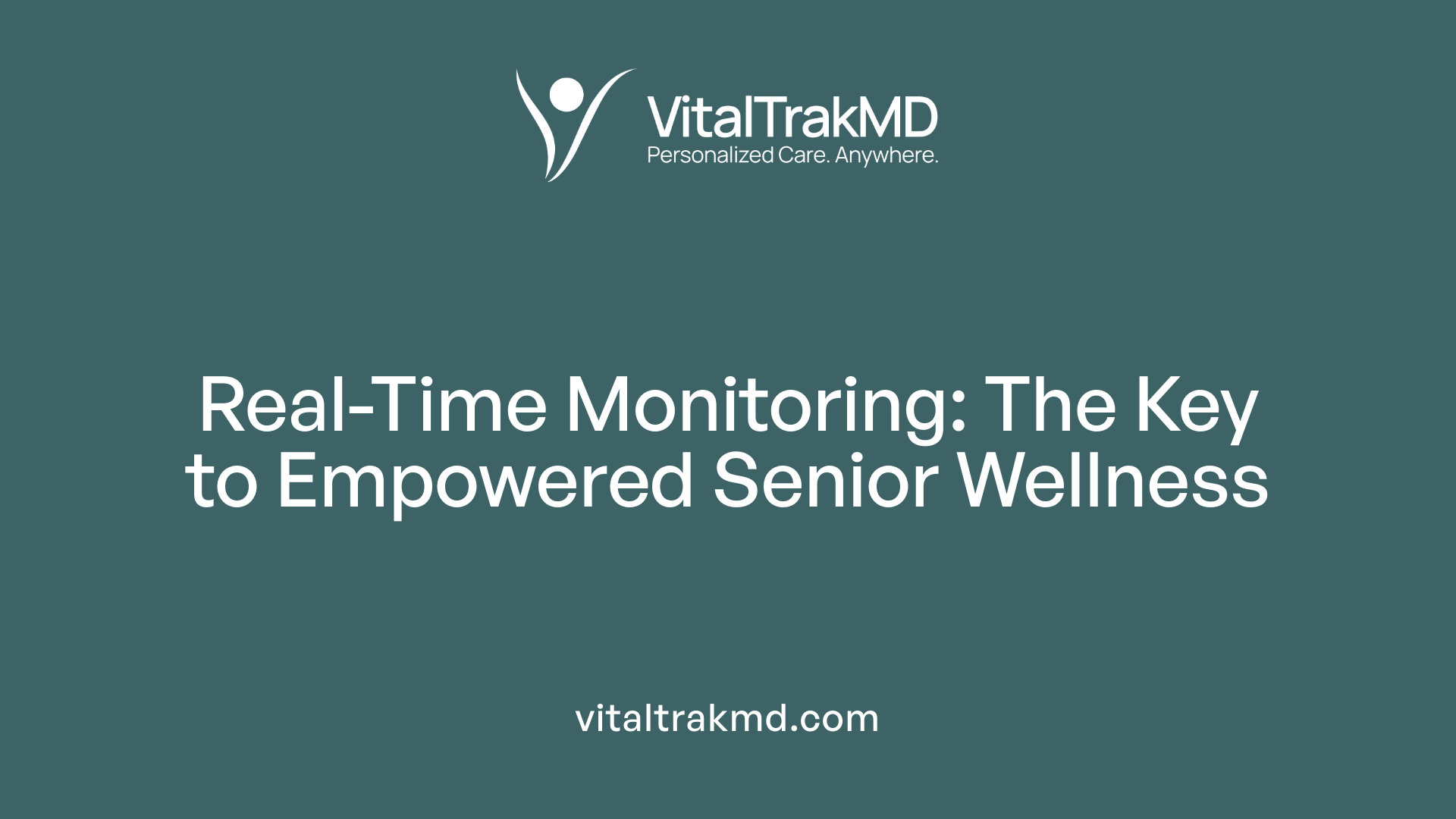
How Do Wearables and Cellular-Enabled Scales Support Seniors?
Wearable devices and cellular-enabled scales form the backbone of Remote Patient Monitoring (RPM) by enabling continuous, real-time tracking of vital health metrics. These smart tools collect data on weight, physical activity, and other important indicators without requiring seniors to visit healthcare facilities frequently. This technology empowers older adults to remain engaged with their health and facilitates proactive management of weight and wellness goals.
What Are the Benefits of Continuous Tracking of Health Metrics?
Continuous data collection provides a detailed picture of an individual's day-to-day health status. For seniors, this means that fluctuations in weight or activity levels are promptly identified. Such comprehensive monitoring allows healthcare providers to detect early warning signs, making it possible to intervene quickly and adjust treatment plans tailored to the patient’s current needs.
How Does RPM Support Timely Interventions?
By analyzing near real-time data, healthcare teams can deliver timely interventions that prevent setbacks. For example, if a decline in physical activity or an unexpected weight gain is observed, care providers can recommend adjustments in exercise routines or nutritional guidance immediately. This responsiveness helps maintain momentum and avoids the common pitfalls of weight management.
In What Ways Does RPM Improve Motivation and Accountability?
Regular feedback fosters a connection between seniors and their caregivers or medical teams, which reinforces commitment to health objectives. Patients participating in RPM programs often report feeling more supported and motivated because their progress is visible and monitored closely. This accountability encourages consistent adherence to dietary and exercise plans, promoting sustained behavioral change.
What Are the Most Effective Weight Loss Strategies Within Wellness Programs?
Remote Patient Monitoring (RPM) facilitates continuous tracking of weight, physical activity, and other vital health metrics, allowing healthcare providers to adjust care plans promptly. This real-time feedback enhances seniors’ motivation and accountability, leading to improved weight loss outcomes and sustained health behaviors.
| Strategy Component | Description | Impact on Seniors |
|---|---|---|
| Wearables & Cellular Scales | Devices that continuously track health metrics | Enables seamless health data collection and engagement |
| Real-Time Data Analysis | Near real-time monitoring of trends and alerts | Allows timely intervention and personalized care adjustments |
| Behavioral Feedback & Support | Regular updates and communication with care teams | Improves motivation, accountability, and adherence to health plans |
| Integration with Wellness Plans | Coordinated use of tracking data in comprehensive programs | Enhances effectiveness of weight loss and overall health outcomes |
Chronic Care Model: Integrating Weight Management with Broader Health Needs

How do wellness programs integrate care approaches to support overall health?
The Chronic Care Model (CCM) successfully combines weight management with the treatment of chronic conditions like obesity, hypertension, and diabetes. This approach involves regular check-ins with healthcare providers, medication management, and coordinated care, which helps patients address multiple health concerns simultaneously.
Patient education and empowerment are central to CCM, enabling individuals to better understand their health conditions and actively participate in self-management. This focus on education fosters long-term engagement and adherence to treatment plans.
By integrating weight management into broader chronic disease care, CCM leads to sustained health improvements. Patients experience more effective management of comorbid conditions and often achieve lasting weight loss, contributing to enhanced overall well-being.
In summary, CCM operates as a comprehensive framework that goes beyond singular disease treatment to support holistic patient health through continuous care, education, and tailored interventions.
Personalized Care Management: Tailoring Strategies to Individual Needs
What are the most effective weight loss strategies within wellness programs?
Personalized Care Management (PCM) stands out as a highly effective approach by creating customized dietary and exercise plans that align with each individual’s health status and lifestyle preferences. This tailored strategy not only supports better adherence but also enhances overall effectiveness by addressing the unique needs of each participant.
PCM actively focuses on overcoming common weight loss hurdles such as plateaus and weight regain. Through continuous monitoring, often incorporating digital health tools, PCM allows for timely adjustments to care plans that keep progress on track. This dynamic, responsive method is key in maintaining motivation and combating stagnation during weight management journeys.
Continuous tracking and data collection provide insights that inform personalized interventions. Regular updates to nutrition and activity recommendations ensure that strategies remain effective and relevant, contributing to more sustainable weight loss outcomes.
By centering on individualized care combined with persistent evaluation and adaptation, PCM improves the success rates of wellness programs targeting weight reduction, making it a valuable component in comprehensive health management.
Behavioral Incentives: Sustaining Motivation for Long-Term Success
How do wellness programs integrate care approaches to support overall health?
Behavioral incentives are a cornerstone of hybrid care models designed for older adults, such as the HOPE-FIT program. These incentives effectively encourage participants to engage in healthy behaviors by offering rewards tied to their progress. The approach combines gradual onboarding with motivational rewards to help seniors overcome initial resistance and build consistent habits over time.
Programs that use behavioral incentives typically blend exercise, psychosocial support, and technology-driven feedback to create a supportive and stimulating environment. This integration helps sustain motivation by making participation feel rewarding and achievable, particularly when combined with caregiver involvement and community engagement.
The focus on linking behavior change with tangible rewards not only promotes adherence but also enhances participants' feelings of accomplishment and connectedness. As a result, such programs improve long-term health outcomes by embedding wellness into daily routines, reducing social isolation, and increasing digital literacy among older adults.
Community Engagement and Caregiver Involvement: Building Support Networks
How do wellness programs integrate care approaches to support overall health?
Hybrid care programs like HOPE-FIT emphasize the involvement of caregivers and community networks to enhance physical and psychological well-being among older adults.
These programs foster social connectedness by encouraging shared participation, which helps reduce feelings of isolation common in senior populations. Through caregiver co-use of technologies and programs, seniors receive valuable encouragement and assistance, improving engagement and adherence.
The presence of a support network creates an environment of mutual accountability and motivation. This social dimension encourages consistent participation and behavioral change, ultimately supporting better health outcomes.
Community engagement activities embedded within such programs also enrich social interactions, providing emotional support alongside physical health benefits. This comprehensive approach addresses not only the medical aspects but also the social and psychological facets of well-being, essential for sustaining long-term health improvements.
Overall, integrating caregivers and community support into wellness programs plays a crucial role in overcoming barriers like social isolation and enhances motivation, fostering a supportive ecosystem for older adults to thrive.
Scalability and Policy Impact of Hybrid Wellness Programs
How does the HOPE-FIT model utilize a hybrid effectiveness-implementation research design?
The HOPE-FIT program employs a hybrid effectiveness-implementation research design that simultaneously assesses clinical outcomes and evaluates real-world applicability. This approach enables researchers to measure both the health benefits for older adults—such as increased physical activity and enhanced quality of life—and the feasibility of delivering the program across varied settings. By integrating effectiveness and practical deployment studies, HOPE-FIT can generate evidence that supports both scientific validation and operational scalability.
What is the importance of real-world applicability in scaling wellness programs?
Real-world applicability ensures that wellness programs like HOPE-FIT function effectively outside controlled trial environments. This is critical for scaling because programs must address everyday challenges older adults face, including digital exclusion and social isolation. By incorporating home-based outreach and digital health technologies tailored to participants’ needs, HOPE-FIT demonstrates adaptability which fosters higher engagement and adherence rates in diverse communities.
How can successful models like HOPE-FIT be scaled effectively?
Successful scalability requires addressing barriers to access and sustainability. HOPE-FIT exemplifies this by:
- Utilizing smart-home monitoring technologies for personalized health tracking.
- Facilitating caregiver involvement to support long-term adherence.
- Engaging communities to build social support networks.
- Employing behavioral incentives and gradual program onboarding.
These elements collectively create a flexible model that can expand across various populations and geographies, maintaining effectiveness while adapting to local contexts.
What are the policy implications of implementing hybrid wellness programs for older adults?
Implementing hybrid programs such as HOPE-FIT has major policy implications. Policymakers can consider:
- Integrating such programs into chronic disease management frameworks.
- Supporting funding for digital infrastructure to reduce health disparities.
- Encouraging partnerships between healthcare providers, community organizations, and technology developers.
- Promoting reimbursement models that recognize remote monitoring and virtual care.
By aligning policy with these program components, governments can enhance preventive health services for older adults, thereby reducing healthcare costs and improving population health outcomes over time.
Evidence Supporting Virtual Care Programs in Facilitating Weight Loss Among Seniors
How do case studies demonstrate patient adherence in virtual care programs?
Several case studies reveal that patients enrolled in virtual care and Remote Patient Monitoring (RPM) programs exhibit notable adherence to their weight management goals. These studies indicate that regular feedback and continuous health data transmission enhance patient motivation and accountability. This ongoing engagement not only helps maintain lifestyle changes but also supports timely adjustments to treatment plans, effectively preventing setbacks during the weight loss journey.
What does the HealthSnap 2024 report say about virtual care?
The HealthSnap 2024 report highlights compelling evidence linking longer participation in RPM programs with increased weight loss and significant health improvements. It found that patients who consistently transmit their health data, such as weight and physical activity metrics, experience better outcomes compared to those with irregular data sharing. This report validates the increasing effectiveness of technology-driven virtual care strategies in managing weight, especially among older adults.
Why is consistent data transmission important in weight loss programs?
Consistent data transmission is crucial in virtual care programs because it provides healthcare providers with near real-time information to monitor patient progress. This continuous flow of data facilitates personalized interventions and behavioral incentives that promote sustained adherence. Moreover, persistent data sharing empowers patients by fostering a sense of accountability and enabling rapid responses to any challenges faced during lifestyle modification.
How does participation length correlate with health outcomes?
Evidence shows a positive correlation between the duration of participation in virtual care programs and improved health outcomes, including weight loss. Programs that engage patients over extended periods tend to yield better sustained results due to greater behavioral reinforcement and ongoing support. Yet, short-term interventions still prove effective, especially when designed to maximize retention and engagement, thereby making virtual care accessible to seniors unwilling or unable to commit long term.
| Aspect | Key Findings | Implications |
|---|---|---|
| Patient Adherence | Enhanced by regular feedback and health data transmission | Improves motivation and accountability |
| HealthSnap 2024 Report | Longer, consistent participation linked with better outcomes | Supports scale-up of RPM and virtual care models |
| Consistent Data Transmission | Enables timely monitoring and personalized interventions | Critical for sustaining lifestyle changes |
| Participation Length | Longer engagement correlates with improved weight loss | Balances between long-term support and short-term feasibility |
The Holistic Benefits of Hybrid Care: Beyond Weight Loss
How do wellness programs integrate care approaches to support overall health?
Hybrid care models like HOPE-FIT integrate multiple strategies to enhance comprehensive well-being in older adults. Beyond promoting physical activity and weight management, these programs actively improve social connectedness and digital literacy.
Quality of Life Improvement
Such models contribute to better quality of life by addressing psychological and physical health simultaneously. The inclusion of psychosocial support alongside exercise ensures seniors receive emotional encouragement, which helps combat isolation and depression frequently seen in aging populations.
Enhancing Social Connectedness
By combining home-based outreach with digital health technologies, HOPE-FIT reduces barriers related to social isolation. Group activities and caregiver involvement foster community engagement, strengthening seniors’ social networks and combating loneliness.
Boosting Digital Literacy
Programs that incorporate smart-home health monitoring tools and wearables also advance digital skills. This aids older adults in adapting to new technologies, reducing digital exclusion—a common barrier preventing many from accessing healthcare benefits.
Comprehensive Well-Being
This multidimensional approach, grounded in a RE-AIM evaluation framework, ensures improvements are measured across physical activity, social integration, mental health, and technological competence. Such holistic care supports sustained wellness, showing that integrating physical, psychosocial, and digital elements can optimize overall health in the aging population.
Sustaining Senior Wellness Through Integrated Hybrid Care
Hybrid care programs like HOPE-FIT demonstrate how the integration of technology, personalized interventions, and psychosocial support can empower seniors to adhere to their health and weight management goals over the long term. By addressing both physical and mental health, enabling continuous monitoring, and building community support, these models provide scalable, sustainable solutions that improve quality of life and health outcomes. As the senior population grows, embracing hybrid care is key to fostering sustainable wellness and independence among older adults.
References
- (PDF) “HOPE-FIT” in Action: A Hybrid Effectiveness– ...
- Weight Loss in Short-Term Interventions for Physical ...
- The Impact of Virtual Care Programs on Weight ...
- Association of changes in mental health with weight loss ...
- Mental Health's Role in Successful Weight Loss
- The Psychological Side of Weight Loss
- The Connection Between Healthy Weight and Mental Health
- Steps for Losing Weight | Healthy Weight and Growth
Recent articles
Want to Feel Better and Live Healthier?
Join hundreds of patients taking control of their health with personalized care that fits their life – not the other way around.
Rated 4.8/5 by 32+ customers







